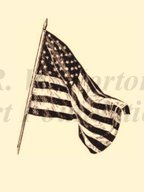
|

|
|
|
|
He was born in Magnolia Springs, Alabama and then was taken to a hospital in Mobile when his mother became ill. She died six months later. Henry's father later married "the nurse that had taken care of me." When he was six, the family moved to Innis, Louisiana, about two miles from the Mississippi River, where he worked on the farm and made and sold brooms. In the flood of 1927 his family stayed on the LSU campus before returning home. After graduating from Innis High School in 1934, Henry worked his way through Louisiana State University, holding down five jobs at one time. He was commissioned in the U.S. Army in 1938, and joined the Twentieth Infantry Regiment of the Sixth Infantry Division. He nearly went to the Philippines before Pearl Harbor. "The list came out who was going to the Philippines," he recalls. "And they drew a line just above my name. Everybody above went." All of them, he says, were captured and suffered the infamous Bataan Death March. He was at Fort Leonard Wood, Missouri when Pearl Harbor was attacked. "Monday morning I was out in the field training," he says. The next day he was sent to Jefferson Barracks in St. Louis to guard bridges, ammunition dumps, and Monsanto Chemical. Henry trained with his regiment at San Luis Obispo, California in preparation for leaving for the Pacific. As senior captain in the U.S. Army, he had to be promoted to major, but there were no slots for that rank in his regiment. Ordered to Camp Blanding near Gainesville, Florida, he commanded an infantry training company for eighteen months. He left for the Pacific on December 5, 1944, landing at Hollandia, New Guinea on Christmas Eve. A month later he shipped out to Luzon in the Philippines, where he was assigned to Company K in the 169th Infantry Regiment of the Forty-Third Infantry Division, a unit comprised mainly of New England National Guard troops. He immediately went into combat, and recalls the vast amounts of flies that made it difficult to eat. Henry weighed 210 pounds when he arrived in the Philippines. Forty-five days later, he weighed 130. He remained on line in combat until Easter Sunday of 1945. The next July he was transferred to Manila Base Motor Command where he remained until the war ended. Discharged as a major in April of 1946, Henry attempted sales jobs, but returned to active duty in 1948. In his post-war career, he served in several duty posts, including Okinawa and Korea, and then spent four years in ROTC work at Washington State University. After retiring from active duty in 1962, he and his wife returned to Shreveport. He was asked to command ROTC at Byrd High School. He finally retired in 1982, although he kept running for several years a summer camp for boys at Barksdale he founded in 1969. |


